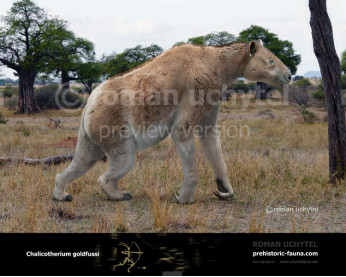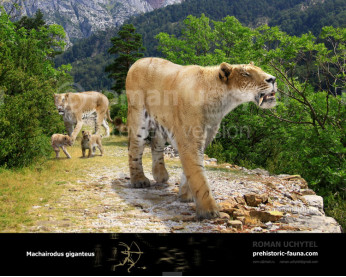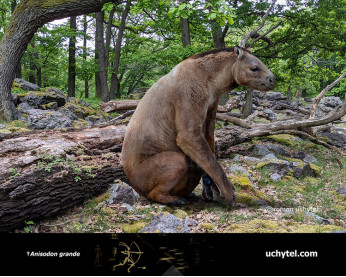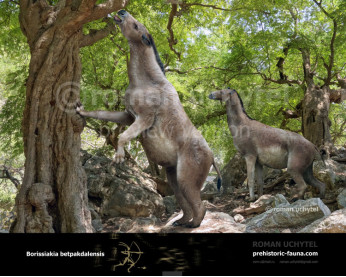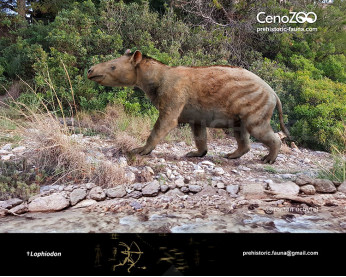Ancylotherium
24422442
Ancylotherium (†Ancylotherium (Gaudry, 1863))
Order: Perissodactyla
Superfamily: †Chalicotherioidea
Family: Chalicotheriidae
Subfamily: †Schizotheriinae
Time period: That lived during the Late Miocene-Early Pleistocene of Europe, Asia, and Africa (9.0—1.8 mya)
Size: 4 m in length, 180-200 cm in height, 300-500 kg of weight
Ancylotherium was relatively large, and was built rather like a takin, with some individuals reaching 2 metres high at the shoulder and a weight of 450 kilograms. While it had the typical long forelimbs and short hind limbs of a chalicothere, like other schizotheriines, it did not walk on its knuckles. It was similar to the North American genus Moropus. Ancylotherium had the highest-crowned teeth of any chalicothere, suggesting a diet of more abrasive plants. While this has been reconstructed as leaves, twigs, and tree bark, one skull discovered in China was from a dry steppe zone with few trees; the genus may have been less dependent on browsing leaves than other chalicotheres.
Ancylotherium's habitat was the savannahs of Eurasia, East and South Africa. As a herbivore, it evolved to browse on vegetation on the trees in the grassy savannahs of Africa. Ancylotherium's closest relatives are the other perissodactyls, or "odd-toed" ungulates, including the extinct brontotheres and modern-day mammals such as horses, tapirs, and rhinoceroses.
Payment
You may use multiple payment methods to buy image such as credit cards, PayPal and bank transfer.
Ancylotherium (†Ancylotherium (Gaudry, 1863))
Order: Perissodactyla
Superfamily: †Chalicotherioidea
Family: Chalicotheriidae
Subfamily: †Schizotheriinae
Time period: That lived during the Late Miocene-Early Pleistocene of Europe, Asia, and Africa (9.0—1.8 mya)
Size: 4 m in length, 180-200 cm in height, 300-500 kg of weight
Ancylotherium was relatively large, and was built rather like a takin, with some individuals reaching 2 metres high at the shoulder and a weight of 450 kilograms. While it had the typical long forelimbs and short hind limbs of a chalicothere, like other schizotheriines, it did not walk on its knuckles. It was similar to the North American genus Moropus. Ancylotherium had the highest-crowned teeth of any chalicothere, suggesting a diet of more abrasive plants. While this has been reconstructed as leaves, twigs, and tree bark, one skull discovered in China was from a dry steppe zone with few trees; the genus may have been less dependent on browsing leaves than other chalicotheres.
Ancylotherium's habitat was the savannahs of Eurasia, East and South Africa. As a herbivore, it evolved to browse on vegetation on the trees in the grassy savannahs of Africa. Ancylotherium's closest relatives are the other perissodactyls, or "odd-toed" ungulates, including the extinct brontotheres and modern-day mammals such as horses, tapirs, and rhinoceroses.

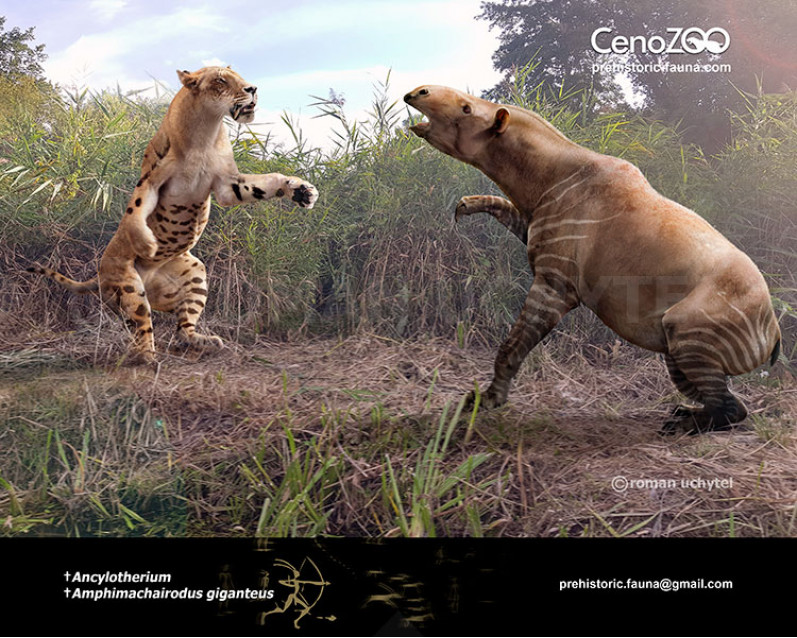
-797x638.jpg)

-70x56.jpg)
